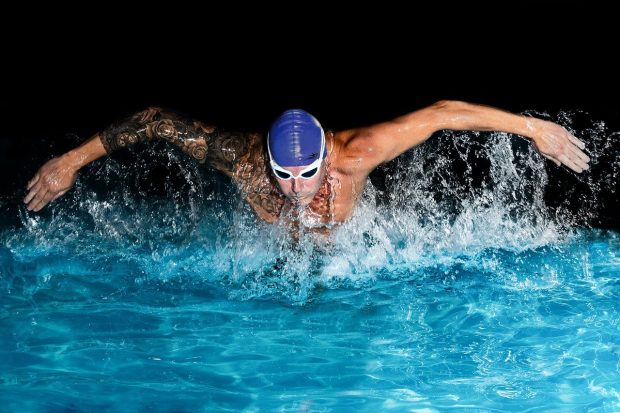What Does Every Swimmer Need To Swim in Open Water?
The open water brings a set of challenges beyond anything you’ll ever encounter in a swimming pool. In a pool, you pretty much know what to expect. In the ocean, even seemingly perfect swimming conditions could turn out not-so-perfect, and that’s putting it lightly.

These undefined boundaries are what you have to be ready for when swimming in open water. Part of being ready is securing the right gear, which you can read more on Churchill Fins Review. But in the meantime, here’s our take on the pieces of gear that can make for a safe and proper open-water swimming venture.
Six Essential Gear Pieces for Swimming in Open Water
Once you’re suited up and ready to take to the ocean, here are some pieces of swimming equipment to consider bringing with you:
1. Wetsuit
When swimming long distances, you can’t do without a wetsuit. Not only can deep water get really cold, but it can also get unpredictable. These are the sort of challenges you’ll fare better with using a wetsuit.
In particular, neoprene wetsuits are superiorly structured and can trap body heat for insulation. When purchasing wetsuits, get one that fits snugly, so there’s only the tiniest passage between the material and your skin. Whether it’s the pounding heat of the sun, chilly waters, or wayward sea objects, wetsuits afford you better protection in open water.
2. Swim Cap
In a pool, a swim cap protects your head and hair from corrosive substances. In open water, it mostly functions as insulation. And, yes, it also keeps wayward strands from obstructing your vision, which is even more necessary in the open sea.
As implied previously, open-water temperatures can shift drastically without warning. From relatively warm waters, temperatures can drop to chilly degrees, making moving those limbs a lot harder. Working in tandem with your wetsuit, a swim cap keeps the head part of your body warm enough to withstand colder water.
Swim caps come in different types, with latex and silicon being among the most popular. A silicon cap is the pricier of the two and the more durable due to its thicker structure. More often than not, you want to choose this kind of cap material for open-water swimming.
There’s also a neoprene cap available for taking warmth preservation to the next level.
3. Goggles
It is never as vital to maintain your swimming vision as it is in the open sea. Swimming in the open sea is like hunting in the wilderness; literally, anything can happen that you have to be ready for. Having a pair of high-quality goggles protects your eyes from prolonged exposure to saltwater.
Like most of your swimming essentials, goggles also need to fit snugly to fulfill their purpose. You also want them to be anti-fog, so they don’t obstruct your vision in any way. While not as corrosive as pool water, ocean water isn’t as clear, so it’s crucial to maximize your view of the surroundings.
An avid open-water swimmer may want to consider goggles of various tints. Consider yellow- or orange-tinted goggles for overcast days and dark-tinted ones for sunny days.
4. Lubricant
Chafing and rubbing are typical issues for long-distance swimmers. That’s because swimming’s repetitive motions can irritate the skin between the legs, neck, and underarm area.
You can imagine how worse this gets in saltwater. Thus, it’s important to keep an anti-chafing stick or container of lube at hand to combat these irritations so you can swim on.
5. Gear for Cold Water
It’s been established that ocean water is cold far more often than it isn’t. Taking it on means keeping your core temperature warm so you can move freely and avoid hypothermia.
A pair of swimming gloves, socks, and boots should further your open-water swimming while also keeping you safe and warm at the same time. When they fit correctly, these items aid in injury prevention and boost swimming comfort.
6. Water Shoes
Open-water swimming also exposes you to the dangers of rocky terrain before the actual swim. Bring a pair of water shoes or flip-flops with you for navigating these rugged paths. Remember, you aren’t just carrying your body weight; you’re also holding on to heavy gear that could be too much for your bare feet to bear.
Get Your Body Ready!
Open-water swimming isn’t for just any swimmer. It won’t be a good idea to brave the seas as a beginner; you want to have the physical and mental fortitude of a seasoned swimmer before you do so.
Also, get the all-clear from your doctor that you are healthy enough to engage in the activity. You may already be a seasoned swimmer, but that doesn’t mean you don’t have any underlying conditions the open water could expose. Remember, these are high-risk activities that require the better-safe-than-sorry approach.
